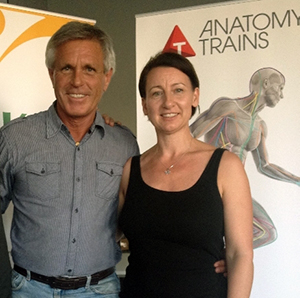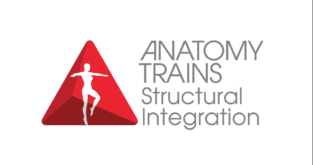About Us
Anatomy Trains® maps the ‘anatomy of connection’ – the whole-body fascial and myofascial linkages. Anatomy Trains links the individual muscles into functional complexes, each with a specific anatomy and ‘meaning’. Anatomy Trains leads to new holistic strategies for health professionals, movement teachers, and athletes to resolve complex postural and movement patterns.
With offices in both America and the UK, Anatomy Trains Australia is the newest addition to the Anatomy Trains® global family, bridging the gap and bringing Australia and surrounding countries the chance to access high level learning opportunities that have previously not been accessible.

Founded by Julie Hammond, Director, - and gaining accolade from Thomas Myers - Anatomy Trains Australia’s aim is to bring high level training courses to qualified therapists of all modalities and to bring the necessary skills and expertise to students to help further their careers and open new pathways.
Learn about the myofascial tissue and its role in the body, see it in context and how it is interdependent with the other body systems. From there we begin to see how the body incorporates the Anatomy Train Lines to create easy and graceful movement – provided they are in some form of balance and harmony; restriction or weakness in one can have many knock effects.
The Anatomy Trains concept moves beyond mechanical “cause and affect” actions of muscles to the integrative relational connections of real-life functional movement. This is a revolutionary map for analyzing soft-tissue patterns, and developing strategies for unwinding these patterns via fascial and myofascial work.
Anatomy Trains offers skills that hands-on therapists, regardless of their modality, can use to see their clients more clearly and work more effectively. The classes are designed primarily for hands-on bodyworkers who want to expand their understanding of the myofascial connections in the body and learn new skills to affect them. It is ideal for physiotherapists, massage therapists, osteopaths and chiropractors but anyone who uses manual techniques will benefit form the classes.
Many movement therapists (Pilates, Feldenkrais, Franklin and Gyrotonic etc.) have also learned much about the body by attending Anatomy Trains. The in-depth BodyReading and touch exercises have given them a profound deepening to their experience of the body. While they may continue to attend we have now also designed a new workshop to give a fuller movement based experience.
Anatomy Trains Structural Integration (ATSI)

Tom Myers studied directly with Dr Ida Rolf, as well as Moshe Feldenkrais, Buckminster Fuller, Judith Aston, Emilie Conrad, and European osteopaths. Tom has practiced
Structural Integration in a variety of clinical and cultural settings since 1976. Tom is the author of Anatomy Trains (Elsevier 2001, 2014), Fascial Release for Structural Balance (North Atlantic 2010, 2017), and numerous articles, DVDs, and webinars.
In 1999, Tom started a certification program in Structural Integration based on the Anatomy Trains myofascial meridians, which has graduated more than 500 practitioners via trainings in the US, Canada, UK, Europe, and Australia.
Vision
Anatomy Trains Structural Integration (KMI) blends the art, science, and craft of Structural Integration in an open-inquiry learning environment that honours all contributions to balanced posture and generous movement.
We are dedicated to providing opportunity for deeper explorations into our inherent somatic wisdom, and to support therapeutic and educational processes leading to self-reliance.
Anatomy Trains Structural Integration is a 640-hr certification offered in three parts. Trainings are offered in US, UK, Europe, Australia, and elsewhere as applicable. There are two formats: Modular and Intensive – see our website for details.
Certification
Anatomy Trains Structural Integration training is open to manual therapists of all types – massage therapists, physical therapists, osteopaths, RN’s, OT’s, and rehab specialists.
Movement professionals are welcome in Part 1, but may be required, on the basis of assessment, to obtain mentoring or further manual therapy training before entering Part 2 & 3.
Part 1: Structural Essentials (Modular or intensive format)
- A coherent philosophy of manual and movement therapy in the 21stcentury
- BodyReading (visual assessment of pattern) vocabulary and practice
- Regional Anatomy and Myofascial Meridians
- Fascial Release Techniques – introduction and practice, spinal unwinding
- Fascial Release Techniques – legs, pelvis, spine, trunk, shoulders, and neck
- Practice with techniques on a variety of models
- Demonstration and practice: 3-session series
- BodyReading practice – functional assessments
Part 3: Structural Integration
- 12-session protocol, demonstration and practice
- Practice building and business prep
- Clinical applications
- Certification testing and review
Prerequisite
Anatomy Trains in Structure & Function
Anatomy Trains in Motion - Qualifies as the prerequisite to the Slings Myofascial Training
*Please note, if you are not a manual therapist, you may be asked to attend mentoring sessions to improve your touch skills if you wish to become a Structural Integration Practitioner.




